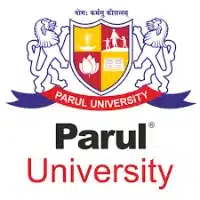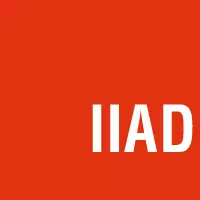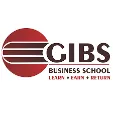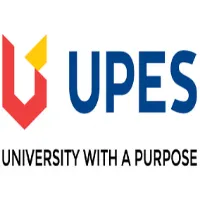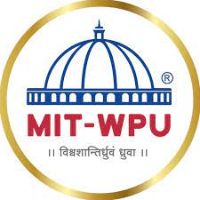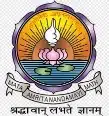Latest Applications Open 2024:
AUEET 2024 (AUSAT) Application Form has been Released on 5th January 2024. The Andhra University Engineering Entrance Test (AUEET) 2024, conducted by the Directorate of Admissions, Andhra University, is set to announce its dates shortly, initiating the application process for aspiring candidates. AUEET serves as the gateway for admission to the esteemed 6-year dual degree program (BTech + MTech) offered by the University College of Engineering (A) and Andhra University (AU) College of Engineering for Women.
Applicants must complete the AUEET 2024 registration online through the official website aueet.audoa.in, adhering strictly to the guidelines provided. The examination, administered in a pen-and-paper format, assesses candidates through 100 multiple-choice questions. Successful registration will grant access to download the AUEET 2024 admit card, which is mandatory for examination attendance.
Following the examination, results will be published, determining candidates’ ranks and eligibility for the subsequent counselling process. Admission selections are based on AUEET 2024 ranks alongside other predetermined criteria. This comprehensive process ensures the identification and enrollment of deserving candidates into these prestigious engineering programs.
AUEET (AUSAT) 2024 Notification – Application Started
![]() AUEET 2024 (AUSAT) Application Form has been Released on 5th January 2024. Check the AUEET Application Details.
AUEET 2024 (AUSAT) Application Form has been Released on 5th January 2024. Check the AUEET Application Details.
AUEET (AUSAT) 2024 Highlights
| AUEET Notification | AUEET Counselling |
| AUEET Application/Registration |
What is AUEET (AUSAT) 2024?
The Andhra University Engineering Entrance Test (AUEET) is an annual examination organized by the Directorate of Admissions, Andhra University. It serves as the entry point for candidates aspiring to pursue the 6-year dual degree program (BTech + MTech) offered at the University College of Engineering (A) and Andhra University (AU) College of Engineering for Women.
AUEET adopts a pen-and-paper format, comprising 100 multiple-choice questions. This competitive test assesses candidates’ aptitude and knowledge in various subjects relevant to engineering disciplines. AUEET provides a crucial platform for aspiring engineers to showcase their abilities and secure admission to esteemed engineering institutions under Andhra University, thereby shaping their academic and professional futures.
Latest Applications For Various UG & PG Courses Open 2024
-
- Parul University | Admissions Open for All Courses 2024. Apply Now
- UPES Dehradun | Admissions Open for All Courses 2024. Apply Now
- Chandigarh University | Admissions Open for All Courses 2024. Apply Now
- LPU 2024 | Admissions Open for All Courses 2024. Apply Now
- IIAD, Delhi | Admissions Open for All Courses 2024. Apply Now
- GIBS, Bangalore | PGDM Applications Open. Package upto 15.5 LPA. Apply Now
- GNIOT, Greater Noida | Admissions Open for All Courses 2023. Apply Now
- The Design Village | Admissions Open for All Courses 2024. Apply Now
- IMS Ghaziabad UC Campus | Admissions Open for All Courses 2024. Apply Now
- KIIT School of Management | Admissions Open for All Courses 2024. Apply Now
- KSRM | Admissions Open for All Courses 2024. Apply Now
- Jaipuria Institute of Management | Admissions Open for All Courses 2024. Apply Now
- NIIT | Admissions Open for All Courses 2024. Apply Now
- MITWPU | Admissions Open for All Courses 2024. Apply Now
- Amrita B.Tech | Admissions Open for All Courses 2024. Apply Now
- KL University | Admissions Open for All Courses 2024. Apply Now
- Alliance MBA | Admissions Open for All Courses 2024. Apply Now
- Alliance UG | Admissions Open for All Courses 2024. Apply Now
AUEET (AUSAT) 2024 Highlights
The AUEET (AUSAT) 2024 brings forth an array of highlights, showcasing its significance as an essential gateway for engineering aspirants. With its annual occurrence, this examination serves as a pivotal platform for candidates to secure admission into esteemed engineering programs. From its comprehensive syllabus to its pen-and-paper format, AUEET embodies the key highlights essential for shaping aspiring engineers’ academic trajectories.
| Particulars | Details |
| Name of the Exam | Andhra University Engineering Entrance Test (AUEET) |
| Conducted By | Andhra University |
| Exam Level | Integrated |
| Exam Frequency | Annual |
| Mode of Exam | Pen-and-Paper-Based Test |
| Total Registrations | N/A |
| Course offered through the exam | Integrated BTech-MTech |
| Exam Fees | General – INR 1,200, SC/ST/PH – INR 1,000 |
| Exam Duration | 1 Hour 30 Minutes |
| Number of Sections | 3 – Mathematics, Physics and Chemistry |
| Total Questions | 100 |
| Marking Scheme | One mark will be given for every correct answer. There will be no negative marking. |
| Medium of Exam | English |
| Colleges Accepting Exam Score | Andhra University |
| No. of Test Cities | 3 |
| Official Website | aueet.audoa.in |
| Contact Details | AUEET Helpline No: 8977581275 and 8500647974 |
AUEET (AUSAT) 2024 Important Dates
The AUEET (AUSAT) 2024 Important Dates delineate the crucial timeline for aspiring candidates aiming to participate in the examination. These dates serve as guideposts, marking significant milestones in the application, examination, and admission processes. Candidates must adhere to these dates to ensure timely completion of registration, preparation, and participation in AUEET 2024.
| Important Events | Dates |
| Date of beginning of the online application forms | 5th January 2024 |
| Date of submission of the online application form | 2nd Week of March 2024 |
| Date of submission of the online application form with late fees of Rs 750/- | 3rd Week of March 2024 |
| Date of releasing the admit card | Last Week of March 2024 |
| Date of AUEET 2024 Entrance Exam | 1st Week of April 2024 |
| Date of releasing the entrance exam answer key | 3rd Week of April 2024 |
| Date of announcement of the entrance exam results | Last Week of April 2024 |
| Registration for online certificate verification & web counselling | 1st Week of May 2024 |
| Off-line (Physical) certificate verification for candidates under CAP category only at the office of the Directorate of Admissions | 2nd Week of May 2024 |
| Uploading of Special Category certificates under NCC & Sports categories | 3rd Week of May 2024 |
| Uploading of certificates. All candidates of AUEET | Last Week of May 2024 |
| Entry/edit of web options by the candidates | Last Week of May 2024 |
| The provisional allotment of seats (first phase) | 1st Week of June 2024 |
| Payment of fee (online) | 2nd Week of June 2024 |
| Date of Reporting (offline) | 3rd Week of June 2024 |
AUEET (AUSAT) 2024 Application Form
The AUEET 2024 application form process is set to commence online, serving as the initial step for candidates aspiring to take part in the entrance examination. Prospective applicants are urged to carefully review the official eligibility criteria before initiating the AUEET 2024 registration. During the application submission, candidates will be required to furnish comprehensive personal, academic, and contact information along with uploading scanned documents as per the guidelines. Payment of the requisite application fee for AUEET 2024 is exclusively facilitated through online channels such as net banking, credit card, or debit card, as specified by the authorities. This meticulous process ensures that candidates adhere to the prescribed protocols while providing essential details, culminating in a seamless application experience for all participants.
- AUEET 2024 application form will soon be available online, initiating the entrance examination process.
- Prospective candidates are urged to carefully review the official eligibility criteria prior to registration.
- The application form necessitates the provision of personal, academic, and contact details by applicants.
- Scanned documents, as per the outlined specifications, must be uploaded during the application submission.
- AUEET 2024 application fee payment is exclusively facilitated online through net banking, credit card, or debit card.
- The authorities emphasize the importance of adhering strictly to the online payment mode for application fees.
- No alternative modes of payment will be entertained by the AUEET 2024 examination authorities.
- Candidates should ensure accuracy and completeness while filling out the application form to avoid discrepancies.
- The application process serves as the initial step for candidates aspiring to appear in the AUEET 2024 entrance examination.
- Successful application submission is vital for participation in subsequent examination and admission processes.
- Detailed instructions and guidelines regarding application submission will be provided on the official AUEET 2024 website.
- Aspirants must stay updated with announcements and instructions regarding the AUEET 2024 application process to avoid any inconvenience.
AUEET (AUSAT) 2024 Application Fees
The AUEET (AUSAT) Application Fees denote the requisite charges for candidates seeking to participate in the examination. Understanding these fees is crucial for applicants intending to complete the registration process accurately and on time. Proper comprehension of the fee structure ensures a smooth application process for AUEET (AUSAT) 2024.
| Category | Application Fee |
| Others | INR 1,200 |
| SC/ST/PH | INR 1,000 |
How to Fill AUEET (AUSAT) 2024 Application Form
To complete the AUEET (AUSAT) 2024 application form, candidates need to adhere to specific guidelines and procedures. Understanding the application process ensures accurate submission and participation in the entrance examination.
- Visit the Official Website: Navigate to the official website of AUEET (AUSAT) 2024.
- Registration: Click on the ‘Registration’ or ‘Apply Now’ link to begin the registration process.
- Read Instructions: Carefully read the instructions provided on the registration page.
- Fill Personal Details: Enter your details such as name, date of birth, gender, email ID, and contact number.
- Educational Information: Provide details regarding your educational qualifications and academic history.
- Select Course: Choose the course you are applying for (e.g., Integrated BTech-MTech).
- Upload Documents: Upload scanned copies of required documents such as photographs, signatures, and relevant certificates.
- Review Form: Double-check all the information provided to ensure accuracy and completeness.
- Pay Application Fee: Proceed to pay the application fee online using the available payment options.
- Submit Form: After successful payment, submit the application form.
- Print Confirmation Page: Download or print the confirmation page for future reference.
- Check Confirmation: Verify that you have received a confirmation email or message acknowledging the submission of your application.
- Track Application Status: Keep track of your application status through the provided application ID or registration number.
- Contact Support (if needed): In case of any queries or issues, reach out to the AUEET helpline for assistance.
Documents Required to Fill AUEET (AUSAT) 2024 Application Form
Before filling out the AUEET (AUSAT) 2024 application form, candidates must ensure they have the necessary documents at hand. These documents play a crucial role in accurately providing personal and academic information during the application process.
- Photograph: Recent passport-size colour photograph with a white background.
- Signature: A scanned copy of your signature in black or blue ink on white paper.
- Educational Certificates: Mark sheets and certificates of qualifying examinations (10th, 12th, or equivalent).
- Category Certificate (if applicable): SC/ST/OBC/EWS certificate issued by the competent authority.
- PWD Certificate (if applicable): Disability certificate for candidates applying under the PWD category.
- Domicile Certificate: Proof of residence or domicile issued by the relevant authority.
- Identification Proof: Any government-issued ID proof such as an Aadhar card, passport, or driving license.
- Date of Birth Proof: Birth certificate or Class 10th certificate mentioning the date of birth.
- Income Certificate (if applicable): Certificate for candidates claiming fee concession based on family income.
- Migration Certificate: For candidates migrating from other universities or boards.
- Character Certificate: Document attesting to your good conduct and behaviour.
- Other Relevant Certificates: Any additional certificates required as per specific eligibility criteria or preferences.
AUEET (AUSAT) 2024 Eligibility Criteria
The AUEET (AUSAT) 2024 Eligibility Criteria delineates the requirements candidates must meet to be eligible for participation in the examination. Understanding these criteria is paramount for aspirants intending to apply for the entrance test.
| Eligibility Criteria | Details |
| Education Qualification | Passed Class 12 from recognized board. |
| Subjects Studied | Physics, Chemistry, and Mathematics. |
| Minimum Percentage Required | 50% marks in qualifying examination. |
AUEET (AUSAT) 2024 Exam Pattern
The AUEET (AUSAT) Exam Pattern delineates the structure and format of the entrance examination. Understanding this pattern is essential for aspirants preparing to undertake the test. It encompasses details such as mode, duration, sections, and marking scheme, offering candidates insight into the examination’s framework.
| Particulars | Details |
| Mode | Offline (Pen-and-paper-based test) |
| Duration | 1 Hour 30 Minutes |
| Medium of Paper | English |
| Sections | Physics, Chemistry, and Mathematics |
| Section Wise Questions | Physics – 30 Questions |
| Chemistry – 30 Questions | |
| Mathematics – 40 Questions | |
| Type of Questions | Objective (Multiple-Choice Questions) |
| Total Number of Questions | 100 |
| Marking Scheme | One mark will be given for every correct answer. There will be no negative marking. |
Marking Scheme:
| Sections | No. of Questions | Marks |
| Physics | 30 | 30 |
| Chemistry | 30 | 30 |
| Mathematics | 40 | 40 |
| Total | 100 | 100 |
AUEET (AUSAT) 2024 Syllabus
The AUEET (AUSAT) 2024, conducted by Andhra University, is an entrance examination for admission to various undergraduate programs offered by the university. The syllabus encompasses diverse subjects including Mathematics, Physics, Chemistry, and Biology, aiming to assess candidates’ proficiency in these areas.
AUEET Syllabus – Chemistry:
| AUEET Chemistry Syllabus | |
| Atomic structure | Sub-atomic particles; Atomic models –Rutherford’s Nuclear Model of atom; Developments to Bohr’s model of atom; Nature of electromagnetic radiation; Particle nature of electromagnetic radiation- Planck’s quantum theory; Bohr’s model for Hydrogen atom; Explanation of line spectrum of hydrogen; Limitations of Bohr’s model; Quantum mechanical considerations of subatomic particles; Dual behaviour of matter; Heisenberg’s uncertainty principle; Quantum mechanical model of an atom. Important features of the Quantum mechanical model of atom; Orbitals and quantum numbers; Shapes of atomic orbitals; Energies of orbitals; Filling of orbitals in atoms. Aufbau Principle, Pauli’s exclusion Principle and Hund’s rule of maximum multiplicity; Electronic configurations of atoms; Stability of half-filled and completely filled orbitals. |
| Classification of elements and periodicity in properties | Need to classify elements; Genesis of periodic classification; Modern periodic law and present form of the periodic table; Nomenclature of elements with atomic number greater than 100; Electronic configuration of elements and the periodic table; Electronic configuration and types of elements s,p,d.and f blocks; Trends in physical properties: (a) Atomic radius, (b) Ionic radius (c) Variation of size in inner transition elements, (d) Ionization enthalpy,(e) Electron gain enthalpy, (f) Electro negativity; Periodic trends in chemical properties: (a) Valence or Oxidation states, (b) Anomalous properties of second-period elements – diagonal relationship; Periodic trends and chemical reactivity. |
| Chemical bonding and molecular structure | Kossel – Lewis approach to chemical bonding, Octet rule, Representation of simple molecules, formal charges, limitations of octet rule; Ionic or electrovalent bond – Factors favourable for the formation of ionic compoundsCrystal structure of sodium chloride, General properties of ionic compounds; Bond Parameters – bond length, bond angle, and bond enthalpy, bond order, resonance-Polarity of bonds dipole moment-Fajan rules; Valence Shell Electron Pair Repulsion (VSEPR) theory; Predicting the geometry of simple molecules; Valence bond theory-Orbital overlap concept-Directional properties of bonds-overlapping of atomic orbitals-types of overlapping and nature of covalent bonds-strength of sigma and pi bonds-Factors favouring the formation of covalent bonds; Hybridisationdifferent types of hybridization involving s, p and d orbitals- shapes of simple covalent molecules; Coordinate bond – definition with examples; Molecular orbital theory – Formation of molecular orbitals, Linear combination of atomic orbitals (LCAO)-conditions for combination of atomic orbitals – Energy level diagrams for molecular orbitals -Bonding in some homo nuclear diatomic molecules- H2, He2, Li2, B2, C2, N2 and O2; Hydrogen bonding-cause of formation of hydrogen bond – Types of hydrogen bonds-inter and intra molecular-General properties of hydrogen bonds. |
| States of matter: gases and liquids | Intermolecular forces; Thermal Energy; Intermolecular forces Vs Thermal interactions; The Gaseous State; The Gas Laws; Ideal gas equation; Graham’s law of diffusion – Dalton’s Law of partial pressures; Kinetic molecular theory of gases; Kinetic gas equation of an ideal gas (No derivation) deduction of gas laws from Kinetic gas equation; Distribution of molecular speeds – rms, average and most probable speeds-Kinetic energy of gas molecules; Behaviour of real gases – Deviation from Ideal gas behaviour – Compressibility factor Vs Pressure diagrams of real gases; Liquefaction of gases; Liquid State – Properties of Liquids in terms of Intermolecular interactions – Vapour pressure, Viscosity and Surface tension (Qualitative idea only. No mathematical derivation). |
| Stoichiometry | Some Basic Concepts – Properties of matter – uncertainty in Measurement-significant figures, dimensional analysis; Laws of Chemical Combinations – Law of Conservation of Mass, Law of Definite Proportions, Law of Multiple Proportions, Gay Lussac’s Law of Gaseous Volumes, Dalton’s Atomic Theory, Avogadro Law, Examples; Atomic and molecular masses- mole concept and molar mass. Concept of equivalent weight; Percentage composition of compounds and calculations of empirical and molecular formulae of compounds; Stoichiometry and stoichiometric calculations-limiting reagent; Methods of Expressing concentrations of solutions-mass percent, mole fraction, molarity, molality and normality; Redox reactions-classical idea of redox reactions, oxidation and reduction reactions-redox reactions in terms of electron transfer; Oxidation number concept; Types of Redox reactions combination, decomposition, displacement and disproportionation reactions; Balancing of redox reactions – oxidation number method Half reaction (ion-electron) method; Redox reactions inTitrimetry. |
| Thermodynamics | Thermodynamic Terms; The system and the surroundings; Types of systems and surroundings; The state of the system; The Internal Energy as a State Function. (a) Work (b) Heat (c) The general case, the first law of Thermodynamics; Applications; Work; Enthalpy, H- a useful new state function; Extensive and intensive properties; Heat capacity; The relationship between Cp and Cv; Measurement of ∆U and ∆H: Calorimetry; Enthalpy change, ∆rH of reactions – reaction Enthalpy (a) Standard enthalpy of reactions, (b) Enthalpy changes during transformations, (c) Standard enthalpy of formation, (d) Thermo chemical equations (e) Hess’s law of constant Heat summation; Enthalpies for different types of reactions. (a) Standard enthalpy of combustion (∆cH θ ), (b) Enthalpy of atomization (∆aH θ ), phase transition, sublimation and ionization, (c) Bond Enthalpy (∆bondH θ ), (d) Enthalpy of solution (∆solH θ ) and dilution-lattice enthalpy; Spontaneity. (a) Is the decrease in enthalpy a criterion for spontaneity? (b) Entropy and spontaneity, the second law of thermodynamics, (c) Gibbs Energy and spontaneity; Gibbs Energy change and equilibrium; Absolute entropy and the third law of thermodynamics. |
| Chemical equilibrium and acids-bases | Equilibrium in Physical process; Equilibrium in chemical process – Dynamic Equilibrium; Law of chemical Equilibrium – Law of mass action and Equilibrium constant; Homogeneous Equilibria, Equilibrium constant in gaseous systems. Relationship between KP and Kc; Heterogeneous Equilibria; Applications of Equilibrium constant; Relationship between Equilibrium constant K, reaction quotient Q and Gibbs energy G; Factors affecting Equilibria – Le-chatlier principle application to the industrial synthesis of Ammonia and Sulphur trioxide; Ionic Equilibrium in solutions; Acids, bases and salts- Arrhenius, Bronsted-Lowry and Lewis concepts of acids and bases; Ionisation of Acids and Bases – Ionisation constant of water and its ionic product- pH scale-ionisation constants of weak acids-ionisation of weak bases-relation between Ka and Kb-Di and polybasic acids and di and poly acidic Bases-Factors affecting acid strength, common ion effect in the ionization of acids and bases-Hydrolysis of salts and pH of their solutions; Buffer solutions designing of buffer solution-Preparation of Acidic buffer; Solubility Equilibria of sparingly soluble salts. Solubility product constant Common ion effect on solubility of Ionic salts. |
| Hydrogen and its compounds | Position of hydrogen in the periodic table; Dihydrogen-Occurence and Isotopes; Preparation of Dihydrogen; Properties of Dihydrogen; Hydrides: Ionic, covalent, and non-stoichiometric hydrides; Water: Physical properties; structure of water, ice. Chemical properties of water; hard and soft water, Temporary and permanent hardness of water; Hydrogen peroxide: Preparation; Physical properties; structure and chemical properties; storage and uses; Heavy Water; Hydrogen as a fuel. |
| S – block elements (alkali and alkaline earth metals) | Group 1 Elements: Alkali metals; Electronic configurations; Atomic and Ionic radii; Ionization enthalpy; Hydration enthalpy; Physical properties; Chemical properties; Uses; General characteristics of the compounds of the alkali metals: Oxides; Halides; Salts of oxo Acids; Anomalous properties of Lithium: Differences and similarities with other alkali metals, Diagonal relationship; similarities between Lithium and Magnesium; Some important compounds of Sodium: Sodium Carbonate; Sodium Chloride; Sodium Hydroxide; Sodium hydrogen carbonate; Biological importance of Sodium and Potassium. Group 2 Elements: Alkaline earth elements; Electronic configuration; Ionization enthalpy; Hydration enthalpy; Physical properties, Chemical properties; Uses; General characteristics of compounds of the Alkaline Earth Metals: Oxides, hydroxides, halides, salts of oxoacids (Carbonates; Sulphates and Nitrates); Anomalous behaviour of Beryllium; its diagonal relationship with Aluminium; Some important compounds of calcium: Preparation and uses of Calcium Oxide; Calcium Hydroxide; Calcium Carbonate; Plaster of Paris; Cement; Biological importance of Calcium and Magnesium. p- BLOCK ELEMENTS GROUP 13 (BORON FAMILY) General introduction – Electronic configuration, Atomic radii, Ionization enthalpy, Electro negativity; Physical & Chemical properties; Important trends and anomalous properties of boron; Some important compounds of boron – Borax, Ortho boric acid, diborane; Uses of boron, aluminium and their compounds. p-BLOCK ELEMENTS – GROUP 14 (CARBON FAMILY) General introduction – Electronic configuration, Atomic radii, Ionization enthalpy, Electro negativity; Physical & Chemical properties; Important trends and anomalous properties of carbon; Allotropes of carbon; Uses of carbon; Some important compounds of carbon and silicon – carbon monoxide, carbon dioxide, Silica, silicones, silicates and zeolites. |
| Environmental chemistry | Definition of terms: Air, Water and Soil Pollutions; Environmental Pollution; Atmospheric pollution; Tropospheric Pollution; Gaseous Air Pollutants (Oxides of Sulphur; Oxides of Nitrogen; Hydrocarbons; Oxides of Carbon (CO, CO2). Global warming and Greenhouse effect; Acid Rain- Particulate Pollutants- Smog; Stratospheric Pollution: Formation and breakdown of Ozone- Ozone hole- effects of depletion of the Ozone Layer; Water Pollution: Causes of Water Pollution; International standards for drinking water; Soil Pollution: Pesticides, Industrial Wastes; Strategies to control environmental pollution- waste Management- collection and disposal; Green Chemistry: Green chemistry in day-to-day life; Dry cleaning of clothes; Bleaching of paper; Synthesis of chemicals. |
| Organic chemistry-some basic principles and techniques and hydrocarbons | General introduction; Tetravalency of Carbon: shapes of organic compounds; Structural representations of organic compounds; Classification of organic compounds; Nomenclature of organic compounds; Isomerism; Fundamental concepts in organic reaction mechanisms; Fission of covalent bond; Nucleophiles and electrophiles; Electron movements in organic reactions; Electron displacement effects in covalent bonds: inductive effect, resonance, resonance effect, electromeric effect, hyperconjugation; Types of Organic reactions; Methods of purification of organic compounds; Qualitative elemental analysis of organic compounds; Quantitative elemental analysis of organic compounds. |
| Hydrocarbons | Classification of Hydrocarbons; Alkanes – Nomenclature, isomerism (structural and conformations of ethane only); Preparation of alkanes; Properties – Physical properties and chemical Reactivity, Substitution reactions – Halogenation(free radical mechanism), Combustion, Controlled Oxidation, Isomerisation, Aromatization, reaction with steam and Pyrolysis; Alkenes- Nomenclature, structure of ethene, Isomerism (structural and geometrical); Methods of preparation; Properties- Physical and chemical reactions: Addition of Hydrogen, halogen, water, sulphuric acid, Hydrogen halides (Mechanism- ionic and peroxide effect, Markovnikov’s, antiMarkovnikov’s or Kharasch effect). Oxidation, Ozonolysis and Polymerization; Alkynes – Nomenclature and isomerism, structure of acetylene. Methods of preparation of acetylene; Physical properties, Chemical reactions- acidic character of acetylene, addition reactions- of hydrogen, Halogen, Hydrogen halides and water. Polymerization; Aromatic Hydrocarbons: Nomenclature and isomerism, Structure of benzene, Resonance and aromaticity; Preparation of benzene. Physical properties. Chemical properties: Mechanism of electrophilic substitution. Electrophilic substitution reactions- Nitration, Sulphonation, Halogenation, Friedel-Craft’ alkylation and acylation; Directive influence of functional groups in mono substituted benzene, Carcinogenicity and toxicity. |
| Solid state | General characteristics of solid state; Amorphous and crystalline solids; Classification of crystalline solids based on different binding forces (molecular, ionic, metallic and covalent solids); Probing the structure of solids: X-ray crystallography; Crystal lattices and unit cells. Bravais lattices primitive and centred unit cells; Number of atoms in a unit cell (primitive, body centred and face centred cubic unit cell); Close packed structures: Close packing in one dimension, in two dimensions and in three dimensions- tetrahedral and octahedral voids- formula of a compound and number of voids filled- locating tetrahedral and octahedral voids; Packing efficiency in simple cubic, bcc and in hcp, ccp lattice; Calculations involving unit cell dimensions-density of the unit cell; Imperfections in solids-types of point defects-stoichiometric and non-stoichiometric defects; Electrical properties-conduction of electricity in metals, semiconductors and insulators- band theory of metals; Magnetic properties. |
| Solutions | Types of solutions; Expressing concentration of solutions – mass percentage, volume percentage, mass by volume percentage, parts per million, mole fraction, molarity and molality; Solubility: Solubility of a solid in a liquid, the solubility of a gas in a liquid, Henry’s law; Vapour pressure of liquid solutions: vapour pressure of liquid- liquid solutions. Raoult’s law as a special case of Henry’s law -vapour pressure of solutions of solids in liquids; Ideal and non-ideal solutions; Colligative properties and determination of molar mass-relative lowering of vapour pressureelevation of boiling point-depression of freezing point-osmosis and osmotic pressure-reverse osmosis and water purification; Abnormal molar masses-van’t Hoff factor. |
| Electrochemistry and chemical kinetics | Electrochemistry: Electrochemical cells; Galvanic cells: measurement of electrode potentials; Nernst equationequilibrium constant from Nernst equation- electrochemical cell and Gibbs energy of the cell reaction; Conductance of electrolytic solution- measurement of the conductivity of ionic solutions-variation of conductivity and molar conductivity with concentration-strong electrolytes and weak electrolytes-applications of Kohlrausch’s law; Electrolytic cells and electrolysis: Faraday’s laws of electrolysis-products of electrolysis; Batteries: primary batteries and secondary batteries; Fuel cells; Corrosion of metals-Hydrogen economy. Chemical kinetics: Rate of a chemical reaction; Factors influencing the rate of a reaction: dependence of rate on concentration- rate expression and rate constant- order of a reaction, molecularity of a reaction; Integrated rate equations-zero order reactions-first order reactions- half-life of a reaction; Pseudo first-order reaction; Temperature dependence of the rate of a reaction -effect of catalyst; Collision theory of chemical reaction rates. |
| Surface Chemistry | Adsorption: Distinction between adsorption and absorption-mechanism of adsorption-types of characteristics of physisorption-characteristics of chemisorptions-adsorption applications from solution phase-applications of adsorption Catalysis: Catalysts, promoters and poisons-auto catalysis- homogeneous and heterogeneous catalysis-adsorption theory of heterogeneous catalysis-important features of solid catalysts: (a)activity (b)selectivity-shape-selective catalysis by zeolites-enzyme catalysis-characteristics and mechanism, catalysts in industry Colloids; Classification of colloids: Classification based on the physical state of the dispersed phase and dispersion medium- classification based on the nature of the interaction between the dispersed phase and dispersion medium, classification based on the type of particles of the dispersed phase- multi-molecular, macromolecular and associated colloids- cleansing action of soaps-preparation of colloids-purification of colloidal solutions-properties of colloidal solutions: Colligative properties, Tyndal effect, colour, Brownian movement-charge on colloidal particles, electrophoresis; coagulation-precipitation methods-coagulation of lyophilic sols and protection of colloidsEmulsions; Colloids around us- application of colloids. |
| General principles of metallurgy | Occurrence of metals; Concentration of ores-levigation, magnetic separation, froth floatation, leaching; Extraction of crude metal from concentrated ore-conversion to oxide, reduction of oxide to the metal; Thermodynamic principles of metallurgy – Ellingham diagram-limitations-applications-extraction of iron, copper and zinc from their oxides; Electrochemical principles of metallurgy; Oxidation and reduction; Refining of crude metal-distillation, liquation poling, electrolytic refining, zone refining and vapour phase refining; Uses of aluminium, copper, zinc and iron. |
| p-block elements | GROUP-15 ELEMENTS: Occurrence- electronic configuration, atomic and ionic radii, ionisation enthalpy, electronegativity, physical and chemical properties; Dinitrogen-preparation, properties and uses; Compounds of nitrogen-preparation, properties and uses of ammonia; Oxides of nitrogen; Preparation and properties of nitric acid; Phosphorous-allotropic forms; Phosphine-preparation, properties and uses; Phosphorous halides; Oxoacids of phosphorous. GROUP-16 ELEMENTS: Occurrence- electronic configuration, atomic and ionic radii, ionisation enthalpy, electron gain enthalpy, electronegativity, physical and chemical properties; Dioxygen-preparation, properties and uses; Simple oxides; Ozone-preparation, properties, structure and uses; Sulphur-allotropic forms; Sulphur dioxide-preparation, properties and uses; Oxoacids of sulphur; Sulphuric acid- manufacture, properties and uses. GROUP-17 ELEMENTS: Occurrence, electronic configuration, atomic and ionic radii, ionisation enthalpy, electron gain enthalpy, electronegativity, physical and chemical properties; Chlorine- preparation, properties and uses; Hydrogen chloride- preparation, properties and uses; Oxoacids of halogens; Interhalogen compounds- preparation, properties and uses. GROUP-18 ELEMENTS: Occurrence, electronic configuration, ionization enthalpy, atomic radii, electron gain enthalpy, physical and chemical properties(a) Xenon-fluorine compounds- XeF2, XeF4 and XeF6 -preparation, hydrolysis and formation of fluoro anions-structures of XeF2, XeF4 and XeF6 (b) Xenon-oxygen compounds XeO3 and XeOF4 – their formation and structures-uses of noble gases |
| d and f block elements & coordination compounds | d AND f BLOCK ELEMENTS : Position in the periodic table; Electronic configuration of the d-block elements; General properties of the transition elements (d-block) -physical properties, variation in atomic and ionic sizes of transition series, ionisation enthalpies, oxidation states, trends in the M²+/M and M³+/M²+ standard electrode potentials, trends in stability of higher oxidation states, chemical reactivity and Eθ values, magnetic properties, formation of coloured ions, formation of complex compounds, catalytic properties, formation of interstitial compounds, alloy formation; Some important compounds of transition elements-oxides and oxoanions of metals-preparation, properties and uses of potassium dichromate and potassium permanganate-structures of chromate, dichromate, manganate and permanganate ions; Inner transition elements(f-block)-lanthanoids- electronic configuration-atomic and ionic sizes-oxidation states- general characteristics; Actinoids-electronic configuration atomic and ionic sizes, oxidation states, general characteristics and comparison with lanthanoids; Some applications of d and f block elements. Coordination compounds: Werner’s theory of coordination compounds; Definitions of some terms used in coordination compounds; Nomenclature of coordination compounds-IUPAC nomenclature; Isomerism in coordination compounds- (a)Stereo isomerism-Geometrical and optical isomerism (b)Structural isomerism-linkage, coordination, ionisation and hydrate isomerism; Bonding in coordination compounds. (a)Valence bond theory – magnetic properties of coordination compounds- limitations of valence bond theory (b) Crystal field theory (i) Crystal field splitting in octahedral and tetrahedral coordination entities (ii) Colour in coordination compounds- limitations of crystal field theory; Bonding in metal carbonyls; Stability of coordination compounds; Importance and applications of coordination compounds. |
| Polymers | Classification of Polymers -Classification based on source, structure, mode of polymerization, molecular forces and growth polymerization; Types of polymerization reactions- addition polymerization or chain growth polymerization-ionic polymerization, free radical mechanism-preparation of addition polymers-polythene, Teflon and polyacrylonitrile-condensation polymerization or step growth polymerization-polyamides-preparation of Nylon 6,6 and nylon 6-poly esters-terylene-bakelite, melamine-formaldehyde polymers; copolymerization- Rubbernatural rubber-vulcanisation of rubber-Synthetic rubbers-preparation of neoprene and buna-N; Molecular mass of polymers-number average and weight average molecular masses- polydispersity index(PDI); Biodegradable polymers-PHBV, Nylon 2-nylon 6; Polymers of commercial importance-polypropene, polystyrene, polyvinylchloride (PVC), urea-formaldehyde resin, glyptal and bakelite – their monomers, structures and uses. |
| Biomolecules | Carbohydrates – Classification of carbohydrates- Monosaccharides: preparation of glucose from sucrose and starch- Properties and structure of glucose- D, L configurations and (+), (-) notations of glucose-Structure of fructose; Disaccharides: Sucrose- preparation, structure; Invert sugar- Structures of maltose and lactosePolysaccharides: Structures of starch, cellulose and glycogen- Importance of carbohydrates. ProteinsAminoacids: Natural aminoacids-classification of aminoacids – structures and D and L forms-Zwitter ions. Proteins: Structures, classification, fibrous and globular- primary, secondary, tertiary and quarternary structures of proteinsDenaturation of proteins.Enzymes: Enzymes, mechanism of enzyme action. Vitamins: Explanation- names, classification of vitamins – sources of vitamins-deficiency diseases of different types of vitamins. Nucleic acids: chemical composition of nucleic acids, structures of nucleic acids, DNA fingerprinting biological functions of nucleic acids. Hormones: Definition, different types of hormones, their production, biological activity, diseases due to their abnormal activities. |
| Chemistry in everyday life | Drugs and their classification: (a) Classification of drugs on the basis of pharmacological effect (b) Classification of drugs on the basis of drug action (c) Classification of drugs on the basis of chemical structure (d) Classification of drugs on the basis of molecular targets; Drug-Target interaction-Enzymes as drug targets (a) Catalytic action of enzymes (b) Drug-enzyme interaction, receptors as drug targets; Therapeutic action of different classes of drugs: antacids, antihistamines, neurologically active drugs: tranquillizers, analgesics-non-narcotic, narcotic analgesics, antimicrobials-antibiotics, antiseptics and disinfectants- antifertility drugs; Chemicals in food-artificial sweetening agents, food preservatives, antioxidants in food; Cleansing agents-soaps and synthetic detergents – types and examples. |
| Haloalkanes and Haloarenes | Classification and nomenclature; Nature of C-X bond; Methods of preparation: Alkyl halides and aryl halides from alcohols, from hydrocarbons (a) by free radical halogenation (b) by electrophilic substitution (c) by replacement of diazonium group(Sandmeyer reaction) (d) by the addition of hydrogen halides and halogens to alkenes-by halogen exchange reactions; Physical properties-melting and boiling points, density and solubility; Chemical reactions: Reactions of haloalkanes (i)Nucleophilic substitution reactions (a) SN² mechanism (b) SN¹ mechanism (c) stereochemical aspects of nucleophilic substitution reactions-optical activity (ii) Elimination reactions (iii) Reaction with metals-Reactions of haloarenes: (i) Nucleophilic substitution (ii)Electrophilic substitution and (iii) Reaction with metals; Polyhalogen compounds: Uses and environmental effects of dichloro methane, trichloromethane triiodomethane, tetrachloro methane, freons and DDT |
| Organic compounds containing C, H AND O (Alcohols, Phenols, Ethers, Aldehydes, Ketones and Carboxylic acids) | ALCOHOLS, PHENOLS AND ETHERS Alcohols, phenols and ethers -classification; Nomenclature: (a)Alcohols, (b)phenols and (c) ethers; Structures of hydroxy and ether functional groups; Methods of preparation: Alcohols from alkenes and carbonyl compounds, from Grignard reagents; Phenols from haloarenes, benzene sulphonic acid, diazonium salts, cumene; Physical propertics of alcohols and phenols; Chemical reactions of alcohols and phenols (i) Reactions involving cleavage of OH bond in alcohols-Acidity of alcohols and phenols, esterification (ii) Reactions involving cleavage of C- O bondreactions with HX, PX3, dehydration and oxidation (iii) Reactions of phenols- electrophilic aromatic substitution, Kolbe’s reaction, Reimer – Tiemann reaction, reaction with zinc dust, oxidation; Commercially important alcohols (methanol,ethanol); Ethers-Methods of preparation: By dehydration of alcohols, Williamson synthesis- Physical properties-Chemical reactions: Cleavage of C-O bond and electrophilic substitution of aromatic ethers (anisole). ALDEHYDES AND KETONES Nomenclature and structure of carbonyl group; Preparation of aldehydes and ketones-(1) by oxidation of alcohols (2) by dehydrogenation of alcohols (3) from hydrocarbons -Preparation of aldehydes (1) from acyl chlorides (2) from nitriles and esters(3) from hydrocarbons-Preparation of ketones(1) from acyl chlorides (2)from nitriles (3)from benzene or substituted benzenes; Physical properties of aldehydes and ketones; Chemical reactions of aldehydes and ketones-nucleophilic addition, reduction, oxidation, reactions due to α- Hydrogen and other reactions (Cannizzaro reaction, electrophilic substitution reaction); Uses of aldehydes and ketones. CARBOXYLIC ACIDS Nomenclature and structure of carboxyl group; Methods of preparation of carboxylic acids (1)from primary alcohols and aldehydes (2) from alkylbenzenes(3)from nitriles and amides (4)from Grignard reagents (5) from acyl halides and anhydrides (6) from esters; Physical properties; Chemical reactions: (i) Reactions involving cleavage of O-H bond-acidity, reactions with metals and alkalies (ii) Reactions involving cleavage of C-OH bond formation of anhydride, reactions with PCl5, PCl3, SOCl2, esterification and reaction with ammonia (iii) Reactions involving-COOH group-reduction, decarboxylation (iv) Substitution reactions in the hydrocarbon part – halogenation and ring substitution; Uses of carboxylic acids |
| Organic compounds containing nitrogen | AMINES Structure of amines; Classification; Nomenclature; Preparation of amines: reduction of nitro compounds, ammonolysis of alkyl halides, reduction of nitriles, reduction of amides, Gabriel phthalimide synthesis and Hoffmann bromamide degradation reaction; Physical properties; Chemical reactions: basic character of amines, alkylation, acylation, carbyl amine reaction, reaction with nitrous acid, reaction with aryl sulphonyl chloride, electrophilic substitution of aromatic amines (aniline)-bromination, nitration and sulphonation. Diazonium salts:Methods of preparation of diazonium salts (by diazotization) Physical properties; Chemical reactions: Reactions involving displacement of Nitrogen; Sandmeyer reaction, Gatterman reaction, replacement by i) iodiode and fluoride ions ii) hydrogen, hydroxyl and Nitro groups; reactions involving retention of the diazo group; coupling reactions; Importance of diazonium salts in the synthesis of aromatic compounds. Cyanides AND Isocyanides:Structure and nomenclature of cyanides and isocyanides; Preparation, physical properties and chemical reactions of cyanides and isocyanides. |
AUEET Syllabus – Physics:
| AUEET Physics Syllabus | |
| Units and measurements | The international system of units, Measurement of Length, Measurement of Large Distances, Estimation of Very Small Distances, Size of a Molecule, Range of Lengths, Measurement of Mass, Range of Masses, Measurement of time, Accuracy, precision of instruments and errors in measurement, Systematic errors, random errors, least count error, Absolute Error, Relative Error and Percentage Error, Combination of Errors, Significant figures, Rules for Arithmetic Operations with Significant Figures, Rounding off the Uncertain Digits, Rules for Determining the Uncertainty in the Results of Arithmetic Calculations, Dimensions of Physical Quantities, Dimensional Formulae and dimensional equations, Dimensional Analysis and its Applications, Checking the Dimensional Consistency of Equations, Deducing Relation among the Physical Quantities. |
| Motion in a straight line | Position, path length and displacement, average velocity and average speed, instantaneous velocity and speed, acceleration, kinematic equations for uniformly accelerated motion, and relative velocity. |
| Motion in a plane | Scalars and vectors, position and displacement vectors, equality of vectors, multiplication of vectors by real numbers, addition and subtraction of vectors – graphical method, resolution of vectors, vector addition – analytical method, motion in a plane, position vector and displacement, velocity, acceleration, motion in a plane with constant acceleration, relative velocity in two dimensions, projectile motion, equation of path of a projectile, time of maximum height, maximum height of a projectile, horizontal range of projectile, uniform circular motion. |
| Laws of Motion | Aristotle’s fallacy, The law of inertia, Newton’s first law of motion, Newton’s second law of motion, momentum, Impulse, Newton’s third law of motion, Conservation of momentum, Equilibrium of a particle, Common forces in mechanics, friction, types of friction, static, kinetic and rolling frictions, Circular motion, Motion of a car on a level road, Motion of a car on a banked road, solving problems in mechanics. |
| Work, energy and power | The Scalar Product, Notions of work and kinetic energy, The work-energy theorem, Work, Kinetic energy, Work done by a variable force, The work-energy theorem for a variable force, The concept of Potential Energy, The conservation of Mechanical Energy, The Potential Energy of a spring, Various forms of energy, Heat, Chemical Energy, Electrical Energy, The Equivalence of Mass and Energy, Nuclear Energy, The Principle of Conservation of Energy, Power, Collisions, Elastic and Inelastic Collisions, Collisions in one dimension, Coefficient of Restitution and its determination, Collisions in Two Dimensions. |
| Systems of particles and rotational motion | Rigid body motion, Centre of mass, Centre of Gravity, Motion of centre of mass, Linear momentum of a system of particles, Vector product of two vectors, Angular velocity and its relation with linear velocity, Angular acceleration, Kinematics of rotational motion about a fixed axis, Moment of force (Torque), Angular momentum of particle, Torque and angular momentum for a system of a particle, conservation of angular momentum, Equilibrium of a rigid body, Principle of moments, Moment of inertia, Theorems of perpendicular and parallel axes, Dynamics of rotational motion about a fixed axis, Angular momentum in case of rotation about a fixed axis, Rolling motion, Kinetic Energy of Rolling Motion. |
| Oscillations | Periodic and oscillatory motions, Period and frequency, Displacement, Simple harmonic motion (S.H.M.), Simple harmonic motion and uniform circular motion, Velocity and acceleration in simple harmonic motion, Force law for Simple harmonic Motion, Energy in simple harmonic motion, Some systems executing Simple Harmonic Motion, Oscillations due to a spring, The Simple Pendulum, Damped simple harmonic motion, Forced oscillations and resonance. |
| Gravitation | Kepler’s laws, the Universal law of gravitation, central forces, the gravitational constant, Acceleration due to gravity of the earth, Acceleration due to gravity below and above the surface of the earth, Gravitational potential energy, Escape speed, Orbital Speed, Earth satellites, Energy of an orbiting satellite, Geostationary and polar satellites, Weightlessness. |
| Mechanical properties of solids | Introduction, Elastic behaviour of solids, Stress and strain, Hooke’s law, Stress-strain curve, Elastic moduli, Young’s Modulus, Determination of Young’s Modulus of the Material of a Wire, Shear Modulus, Bulk Modulus, Poisson’s Ratio, Elastic Potential Energy in a Stretched wire, Applications of elastic behaviour of materials. |
| Mechanical properties of fluids | Pressure, Pascal’s Law, Variation of Pressure with Depth, Atmospheric Pressure and Gauge Pressure, Hydraulic Machines, Archimedes’ Principle, Streamline flow, Bernoulli’s principle, Speed of Efflux, Torricelli’s Law, Venturi- meter, Blood Flow and Heart Attack, Dynamic Lift, Viscosity, Variation of Viscosity of fluids with temperature, Stokes’ Law, Reynolds number, Critical Velocity, Surface tension and Surface Energy, Angle of Contact, Drops and Bubbles, Capillary Rise, Detergents and Surface Tension |
| Thermal properties of matter | Temperature and heat, Measurement of temperature, Ideal-gas equation and absolute temperature, Thermal expansion, Specific heat capacity, Calorimetry, Change of state, Triple Point, Regelation, Latent Heat, Heat transfer, Conduction, Convection, Radiation, Black body Radiation, Greenhouse Effect, Newton’s law of cooling and its experimental verification. |
| Thermodynamics | Thermal equilibrium, Zeroth law of thermodynamics, Heat, Internal Energy and work, First law of thermodynamics, Specific heat capacity, Specific heat capacity of water, Thermodynamic state variables and equation of State, Thermodynamic processes, Quasi-static process, Isothermal Process, Adiabatic Process, Isochoric Process, Isobaric process, Cyclic process, Heat engines, Refrigerators and heat pumps, Second law of thermodynamics, Reversible and irreversible processes, Carnot engine, Carnot’s theorem. |
| Kinetic theory | Molecular nature of matter, Behaviour of gases, Boyle’s Law, Charles’ Law, Kinetic theory of an ideal gas, Pressure of an Ideal Gas, Kinetic interpretation of temperature, Law of equipartition of energy, Specific heat capacity, Monatomic Gases, Diatomic Gases, Polyatomic Gases, Specific Heat Capacity of Solids, Specific Heat Capacity of Water, Mean free path. |
| Waves | Transverse and longitudinal waves, displacement relation in a progressive wave, amplitude and phase, wavelength and angular wave number, period, angular frequency and frequency, the speed of a travelling wave, speed of a transverse wave on stretched string, speed of a longitudinal wave (speed of sound), the principle of superposition of waves, reflection of waves, standing waves and normal modes, beats, Doppler effect: source moving and observer stationary, observer moving and source stationary, both source and observer moving. |
| Ray optics and optical instruments | Reflection of light by spherical mirrors, sign convention, focal length of spherical mirrors, the mirror equation, refraction, total internal reflection, total internal reflection in nature and its technological applications, refraction at spherical surfaces and by lenses, power of a lens, combination of thin lenses in contact, refraction through a prism, dispersion by a prism, some natural phenomena due to sunlight, the rainbow, scattering of light, optical instruments, the eye, the simple and compound microscopes, refracting telescope and Cassegrain reflecting telescope. |
| Wave optics | Huygens principle, refraction and reflection of plane waves using Huygens principle, refraction in a rarer medium (at the denser medium boundary), reflection of a plane wave by a plane surface, the Doppler effect, coherent and incoherent addition of waves, interference of light waves and Young‘s experiment, diffraction, the single slit diffraction, resolving power of optical instruments, the validity of ray optics, polarisation, polarisation by scattering, polarisation by reflection. |
| Electric charges and fields | Electric charge, conductors and insulators, charging by induction, basic properties of electric charges, additivity of charges, conservation of charge, quantization of charge, Coulomb’s law, forces between multiple charges, electric field, electric field due to a system of charges, physical significance of electric field, electric field lines, electric flux, electric dipole, the field of an electric dipole for points on the axial line and on the equatorial plane, physical significance of dipoles, dipole in a uniform external field, continuous charge distribution, Gauss’s law, applications of Gauss’s law, field due to an infinitely long straight uniformly charged wire, field due to a uniformly charged infinite plane sheet, field due to a uniformly charged thin spherical shell. |
| Electrostatic potential and capacitance | Electrostatic potential, potential due to a point charge, potential due to an electric dipole, potential due to a system of charges, equipotential surfaces, the relation between field and potential, the potential energy of a system of charges, potential energy in an external field, the potential energy of a single charge, potential energy of a system of two charges in an external field, potential energy of a dipole in an external field, electrostatics of conductors, electrostatic shielding, dielectrics and polarisation, electric displacement, capacitors and capacitance, the parallel plate capacitor, effect of dielectric on capacitance, combination of capacitors, capacitors in series, capacitors in parallel, energy stored in a capacitor, Van de Graff generator. |
| Current electricity | Electric current, electric current in conductors, Ohm’s law, the drift of electrons and the origin of resistivity, mobility, limitations of Ohm’s law, the resistivity of various materials, colour code of resistors, the Temperature dependence of resistivity, electrical energy, power, combination of resistors – series and parallel. Cells, EMF, internal resistance, cells in series and parallel, Kirchhoff’s rules, Wheatstone Bridge, Meter Bridge, Potentiometer. |
| Moving charges and magnetism | Magnetic force, sources and fields, magnetic field, Lorentz force, the magnetic force on a current-carrying conductor, motion in a magnetic field, the helical motion of charged particles, motion in combined electric and magnetic fields, velocity selector, Cyclotron, magnetic field due to a current element, Biot – Savart’s law, Magnetic field on the axis of a circular current loop, Ampere’s circuital law, the solenoid and the toroid, force between two parallel current carrying conductors, the ampere (UNIT), torque on current loop, magnetic dipole, torque on a rectangular current loop in a uniform magnetic field, circular current loop as a magnetic dipole, the magnetic dipole moment of a revolving electron, the Moving Coil Galvanometer; conversion into ammeter and voltmeter. |
| Magnetism and Matter | The bar magnet, the magnetic field lines, bar magnet as an equivalent solenoid, The dipole in a uniform magnetic field, the electrostatic analogue, Magnetism and Gauss’s Law, The Earth’s magnetism, magnetic declination and dip, magnetisation and magnetic intensity, susceptibility, magnetic properties of materials; Diamagnetism, Paramagnetism, Ferromagnetism, Hysteresis loop, permanent magnets and electromagnets. |
| Electromagnetic induction | The experiments of Faraday and Henry, magnetic flux, Faraday’s Law of induction, Lenz’s law and conservation of energy, motional electromotive force, energy consideration – a quantitative study, Eddy currents, inductance, mutual inductance, self-inductance, AC generator. |
| Alternating current | AC voltage applied to a resistor, representation of AC current and voltage by rotating vectors – Phasors, AC voltage applied to an inductor, AC voltage applied to a capacitor, AC voltage applied to a series LCR circuit, Phasor–diagram solution, analytical solution, resonance, sharpness of resonance, power in AC circuit, the power factor, LC oscillations, transformers. |
| Electromagnetic waves | Displacement current, Maxwell’s equations, electromagnetic waves, sources of electromagnetic waves, nature of electromagnetic waves, electromagnetic spectrum: radio waves, microwaves, infrared waves, visible rays, ultraviolet rays, X-rays, gamma rays. |
| Dual nature of radiation and matter | Electron emission, Photoelectric Effect, Hertz’s observations, Hallwachs and Lenard’s observations, experimental study of photoelectric effect, effect of intensity of light on photocurrent, effect of potential on photoelectric current, effect of frequency of incident radiation on stopping potential, Photoelectric effect and Wave theory of Light, Einstein’s Photoelectric equation, Energy Quantum of Radiation, particle nature of light, the photon, wave nature of matter, photocell, Davisson and Germer experiment. |
| Atoms | Alpha particle scattering and Rutherford’s nuclear model of atom, alpha particle trajectory, electron orbits, atomic spectra, spectral series, Bohr model of the hydrogen atom, energy levels, Franck – Hertz experiment, the line spectra of the hydrogen atom, de Broglie’s explanation of Bohr’s second postulate of quantization, LASER light. |
| Nuclei | Atomic masses and composition of the nucleus, the discovery of the neutron, size of the nucleus, Mass – Energy and Nuclear Binding Energy, Nuclear Force, Radioactivity, Law of radioactive decay, Alpha decay, Beta decay, Gamma decay, Nuclear Energy, Fission, Nuclear reactor, nuclear fusion, energy generation in stars, controlled thermonuclear fusion. |
| Semiconductor electronics: materials, devices and simple circuits | Classification of metals, conductors, and semiconductors on the basis of conductivity and energy bands, Band theory of solids, Intrinsic semiconductor, Extrinsic semiconductor, p-type semiconductor, n-type semiconductor, p-n junction formation, semiconductor diode, p-n junction diode under forward bias, p-n junction diode under reverse bias, Application of junction diode as a rectifier, special purpose p-n junction diodes, Zener diode, Zener diode as voltage regulator, Optoelectronic junction devices, Photodiode, light emitting diode, solar cell, Junction transistor, structure and action, Basic transistor circuit configurations and transistor characteristics, transistor as a switch and as an amplifier (CE – Configuration), Feedback amplifier and transistor oscillator, Digital Electronics and Logic gates, NOT, OR, AND, NAND and NOR Gates, Integrated circuits. |
| Communication systems | Elements of a Communication system, basic terminology used in electronic communication systems, bandwidth of signals, bandwidth of transmission medium, propagation of electromagnetic waves, ground waves, sky waves, space wave, modulation and its necessity, size of the antenna or aerial, effective power radiated by an antenna, mixing up of signals from different transmitters, amplitude modulation, production of amplitude modulated wave, detection of amplitude modulated wave. |
AUEET Syllabus – Mathematics:
| AUEET Mathematics Syllabus | |
| Algebra | a) Functions: Types of functions – Definitions – Inverse functions and Theorems – Domain, Range, Inverse of real-valued functions. b) Mathematical Induction: Principle of Mathematical Induction & Theorems – Applications of Mathematical Induction – Problems on divisibility. c) Matrices: Types of matrices – Scalar multiple of a matrix and multiplication of matrices – Transpose of a matrix – Determinants – Adjoint and Inverse of a matrix – Consistency and inconsistency of Equations- Rank of a matrix – Solution of simultaneous linear equations. d) Complex Numbers: Complex number as an ordered pair of real numbers- fundamental operations – Representation of complex numbers in the form a+ib – Modulus and amplitude of complex numbers –Illustrations – Geometrical and Polar Representation of complex numbers in Argand plane- Argand diagram. Multi-conceptual Problem on the above concepts e) De Moivre’s Theorem: De Moivre’s theorem- Integral and Rational indices – nth roots of unity-Geometrical Interpretations – Illustrations. f) Quadratic Expressions: Quadratic expressions, equations in one variable – Sign of quadratic expressions – Change in signs – Maximum and minimum values – Quadratic inequations g) Theory of Equations: The relation between the roots and coefficients in an equation – Solving the equations when two or more roots of it are connected by certain relation – Equation with real coefficients, the occurrence of complex roots in conjugate pairs and its consequences – Transformation of equations – Reciprocal Equations. h) Permutations and Combinations: Fundamental Principle of counting – linear and circular permutationsPermutations of ‘n’ dissimilar things taken ‘r’ at a time – Permutations when repetitions allowed – Circular permutations – Permutations with constraint repetitions – Combinations-definitions, certain theorems and their applications. i) Binomial Theorem: Binomial theorem for positive integral index – Binomial theorem for rational Index (without proof) – Approximations using Binomial theorem. j) Partial fractions: Partial fractions of f(x)/g(x) when g(x) contains non–repeated linear factors – Partial fractions of f(x)/g(x) where both f(x) and g(x) are polynomials and when g(x) contains repeated and/or non-repeated linear factors – Partial fractions of f(x)/g(x) when g(x) contains irreducible factors |
| Trigonometry | a) Trigonometric Ratios up to Transformations: Graphs and Periodicity of Trigonometric functions – Trigonometric ratios and Compound angles – Trigonometric ratios of multiple and sub-multiple angles – Transformations – Sum and Product rules. b) Trigonometric Equations: General Solution of Trigonometric Equations – Simple Trigonometric Equations – Solutions. c) Inverse Trigonometric Functions: To reduce a Trigonometric Function into a bijection – Graphs of Inverse Trigonometric Functions – Properties of Inverse Trigonometric Functions. d) Hyperbolic Functions: Definition of Hyperbolic Function – Graphs – Definition of Inverse Hyperbolic Functions – Graphs – Addition formulae of Hyperbolic Functions. e) Properties of Triangles: Relation between sides and angles of a Triangle – Sine, Cosine, Tangent and Projection rules – Half angle formulae and areas of a triangle – Incircle and Excircle of a Triangle. |
| Vector algebra | a) Addition of Vectors: Vectors as a triad of real numbers – Classification of vectors – Addition of vectors – Scalar multiplication – Angle between two non-zero vectors – The linear combination of vectors – Component of a vector in three dimensions – Vector equations of line and plane including their Cartesian equivalent forms. b) Product of Vectors: Scalar Product – Geometrical Interpretations – orthogonal projections – Properties of dot product – Expression of dot product in i, j, k system – Angle between two vectors – Geometrical Vector methods – Vector equations of plane in normal form – Angle between two planes – Vector product of two vectors and properties – Vector product in i, j, k system – Vector Areas – Scalar Triple Product – Vector equations of plane in different forms, skew lines, shortest distance and their Cartesian equivalents. The plane through the line of intersection of two planes, condition for coplanarity of two lines, perpendicular distance of a point from a plane, the angle between the line and a plane. Cartesian equivalents of all these results – Vector Triple Product – Results. |
| Measures of dispersion and probability | a) Measures of Dispersion – Range – Mean deviation – Variance and standard deviation of ungrouped/grouped data – Coefficient of variation and analysis of frequency distribution with equal means but different variances. For Ungrouped Data- For Grouped Data b) Probability: Random experiments and events – Classical definition of probability, Axiomatic approach and addition theorem of probability – Independent and dependent events – conditional probability- multiplication theorem and Baye’s theorem. c) Random Variables and Probability Distributions: Random Variables – Theoretical discrete distributions – Binomial and Poisson Distributions. |
| Coordinate geometry | a) Locus: Definition of locus – Illustrations – To find equations of locus – Problems connected to it. b) Transformation of Axes: Transformation of axes – Rules, Derivations and Illustrations – Rotation of axes – Derivations – Illustrations. c) The Straight Line: Revision of fundamental results – Straight line – Normal form – Illustrations – Straight line – Symmetric form – Straight line – Reduction into various forms – Intersection of two Straight Lines – Family of straight lines – Concurrent lines – Condition for Concurrent lines – Angle between two lines – Length of perpendicular from a point to a Line – Distance between two parallel lines – Concurrent lines – properties related to a triangle. d) Pair of Straight lines: Equations of pair of lines passing through origin – the angle between a pair of lines – Condition for perpendicular and coincident lines, bisectors of angles – Pair of bisectors of angles – Pair of lines – second-degree general equation – Conditions for parallel lines – the distance between them, Point of the intersection of pair of lines – Homogenizing a second-degree equation with a first-degree equation in x and y. e) Circle: Equation of circle -standard form-centre and radius equation of a circle with a given line segment as diameter & equation of a circle through three non-collinear points – parametric equations of a circle – Position of a point in the plane of a circle – the power of a point-definition of tangent-length of a tangent – Position of a straight line in the plane of a circle-conditions for a line to be tangent – chord joining two points on a circle – equation of the tangent at a point on the circle- point of contact-equation of normal – Chord of contact – pole and polar-conjugate points and conjugate lines – equation of chord in term of its midpoint – Relative position of two circles- circles touching each other externally, internally- common tangents –centres of similitude- equation of pair of tangents from an external point. f) System of circles: Angle between two intersecting circles – Radical axis of two circles- properties- Common chord and common tangent of two circles – radical centre – Intersection of a line and a Circle. g) Parabola: Conic sections –Parabola- equation of the parabola in standard form-different forms of parabola parametric equations – Equations of tangent and normal at a point on the parabola ( Cartesian and parametric) – conditions for a straight line to be a tangent. h) Ellipse: Equation of ellipse in standard form- Parametric equations – Equation of tangent and normal at a point on the ellipse (Cartesian and parametric) – condition for a straight line to be a tangent. i) Hyperbola: Equation of hyperbola in standard form- Parametric equations – Equations of tangent and normal at a point on the hyperbola (Cartesian and parametric) – conditions for a straight line to be a tangent- Asymptotes. j) Three-Dimensional Coordinates: Coordinates – Section formulae – Centroid of a triangle and tetrahedron. k) Direction Cosines and Direction Ratios: Direction Cosines – Direction Ratios. l) Plane: Cartesian equation of Plane – Simple Illustrations. |
| Calculus | a) Limits and Continuity: Intervals and neighbourhoods – Limits – Standard Limits – Continuity. b) Differentiation: Derivative of a function – Elementary Properties – Trigonometric, Inverse Trigonometric, Hyperbolic, Inverse Hyperbolic Function – Derivatives – Methods of Differentiation – Second-Order Derivatives. c) Applications of Derivatives: Errors and approximations – Geometrical Interpretation of a derivative – Equations of tangents and normals – Lengths of tangent, normal, subtangent and subnormal – Angles between two curves and condition for orthogonality of curves – Derivative as Rate of change – Rolle’s Theorem and Lagrange’s Mean value theorem without proofs and their geometrical interpretation – Increasing and decreasing functions – Maxima and Minima. d) Integration: Integration as the inverse process of differentiation- Standard forms -properties of integrals – Method of substitution- integration of Algebraic, exponential, logarithmic, trigonometric and inverse trigonometric functions – Integration by parts – Integration by Partial fractions method – Reduction formulae. e) Definite Integrals: Definite Integral as the limit of the sum – Interpretation of Definite Integral as an area – Fundamental Theorem of Integral Calculus (without proof) – Properties – Reduction formulae – Application of Definite integral to areas. f) Differential equations: Formation of differential equation-Degree and order of an ordinary differential equation – Solving differential equation by i) Variables separable method, ii) Homogeneous differential equation, iii) Non – Homogeneous differential equation, iv) Linear differential equations. |
AUEET (AUSAT) 2024 Preparation Tips
Preparing for the AUEET (AUSAT) 2024 exam requires a strategic approach and consistent effort. Here are some comprehensive preparation tips to help you ace the exam:
- Understand the Syllabus: Familiarize yourself with the entire syllabus outlined by the exam board. Divide it into manageable sections for systematic study.
- Create a Study Schedule: Develop a realistic study timetable that allocates sufficient time for each subject and topic. Ensure to include regular breaks for relaxation and revision.
- Gather Study Materials: Collect quality study materials such as textbooks, reference books, online resources, and previous years’ question papers to supplement your learning.
- Focus on Basics: Strengthen your foundational knowledge by revisiting fundamental concepts in mathematics, physics, and other relevant subjects.
- Practice Regularly: Practice solving problems regularly to improve your problem-solving skills and speed. Dedicate time to solving sample papers and mock tests to simulate exam conditions.
- Time Management: Practice time management during your preparation and while attempting practice tests. Learn to allocate time efficiently to different sections of the exam.
- Revision Strategy: Allocate dedicated time for revision to reinforce your learning and identify weak areas that need improvement. Review your notes regularly and create concise summaries for quick revision.
- Seek Clarification: Don’t hesitate to seek clarification from teachers, tutors, or peers if you encounter any doubts or difficulties while studying.
- Mock Tests Analysis: Analyze your performance in mock tests to identify strengths and weaknesses. Focus on improving weaker areas and refining your exam-taking strategy.
- Stay Healthy: Maintain a balanced lifestyle by getting adequate sleep, eating nutritious meals, and engaging in regular physical activity. A healthy body and mind are essential for optimal exam performance.
- Stay Positive: Stay motivated and maintain a positive attitude throughout your preparation journey. Believe in yourself and your abilities to overcome challenges and succeed in the exam.
- Manage Stress: Practice relaxation techniques such as deep breathing, meditation, or yoga to manage exam-related stress and anxiety effectively.
- Stay Updated: Stay updated with any changes or updates regarding the exam pattern, syllabus, or important dates. Keep a check on official notifications from the exam conducting authorities.
- Stay Consistent: Consistency is key to success. Stay committed to your study schedule and remain disciplined in your approach towards preparation until the exam day.
AUEET 2024 Reservation Criteria
The AUEET 2024 Reservation Criteria outlines the allocation of seats based on various categories to ensure equitable opportunities for candidates from diverse backgrounds. Understanding these reservation criteria is essential for candidates seeking admission through the AUEET examination process. This introductory overview provides insight into the reservation percentages allotted to different categories, facilitating a fair and transparent admission process.
| Category | Reservation % |
| Scheduled Castes (SC) | 15% |
| Scheduled Tribes (ST) | 6% |
| Backward Classes (BC) | 29% |
| BC-A | 7% |
| BC-B | 10% |
| BC-C | 1% |
| BC-D | 7% |
| BC-E | 4% |
| NCC | 1% |
| Sports | 0.5% |
| Children of Armed Forces Personnel (CAP) | 2% |
| Physically Handicapped | 3% |
| Supernumerary seats in each course | 5% |
| Supernumerary seats for foreign students | 15% |
AUEET (AUSAT) 2024 Admit Card
The AUEET 2024 admit card will be made available online on the official website aueet.audoa.in, although the specific release date has not yet been announced by the authorities. Once released, registered candidates can log in using their credentials to access the admit card.
This crucial document will contain essential details such as the exam centre address, date, time, and exam guidelines. Candidates must carry both the AUEET admit card and a valid identity proof to the exam centre. Failure to present the admit card will render candidates ineligible to appear for the AUEET 2024 exam. Candidates should stay updated with official announcements regarding the admit card release and other exam-related information.
How to download the AUEET (AUSAT) 2024 Hall Ticket
The AUEET (AUSAT) 2024 Hall Ticket is a crucial document required for appearing in the exam. Here’s a detailed guide on how to download it:
- Visit Official Website: Go to the official website of AUEET (AUSAT) 2024.
- Navigate to the Admit Card Section: Look for the “Admit Card” or “Hall Ticket” section on the homepage.
- Click on Admit Card Link: Click on the link provided for downloading the AUEET (AUSAT) 2024 Hall Ticket.
- Enter Login Credentials: Enter your login credentials such as application number and password.
- Submit Details: After entering the required information, submit the details.
- View Admit Card: Your AUEET (AUSAT) 2024 Hall Ticket will be displayed on the screen.
- Verify Details: Check all the details mentioned on the admit card for accuracy.
- Download Admit Card: If all details are correct, proceed to download the admit card.
- Save the PDF: Save the admit card PDF file on your device for future reference.
- Print Admit Card: Take a printout of the downloaded admit card.
- Check Guidelines: Read all the instructions mentioned on the admit card carefully.
- Affix Photograph: If required, affix a recent passport-sized photograph in the space provided.
- Carry to Exam: On the day of the exam, carry the printed admit card along with a valid photo ID proof.
- Arrive Early: Ensure to reach the exam centre well before the reporting time mentioned on the admit card.
AUEET (AUSAT) 2024 Result
The AUEET 2024 results will be published online where candidates can view their obtained scores and ranks. Access to the AUEET 2024 rank card will be granted through a login process using the candidates’ credentials. In case of any discrepancies or errors in the result, candidates are advised to promptly reach out to the authorities for resolution. The rank card will play a crucial role in further admission processes. Candidates should ensure they carefully verify their details upon accessing the result and take necessary steps if any issues arise. It is recommended to stay updated with official announcements and notifications regarding the result declaration and related procedures.
How to Check the AUEET (AUSAT) 2024 Result
Checking the AUEET (AUSAT) 2024 result is a crucial step for candidates who have appeared in the exam. Here’s a detailed guide on how to check the result:
- Visit Official Website: Access the official website of AUEET (AUSAT) 2024.
- Find Result Section: Look for the “Result” or “Result Announcement” section on the homepage.
- Click on Result Link: Click on the link provided for accessing the AUEET (AUSAT) 2024 result.
- Enter Login Credentials: Enter your login details like registration number and password.
- Submit Details: After entering the required information, submit the details.
- View Result: Your AUEET (AUSAT) 2024 result will be displayed on the screen.
- Check Scores: Verify your scores and ranks mentioned on the result page.
- Download Scorecard: If available, download the scorecard for future reference.
- Print Result: Take a printout of the result or scorecard for documentation purposes.
- Check Merit List: If applicable, check the merit list released along with the result.
- Look for Cut-off Marks: Check if there are any cut-off marks mentioned and see if you have qualified.
- Follow Further Instructions: Read any additional instructions provided along with the result.
- Contact Authorities (if needed): In case of any discrepancies or doubts, contact the exam authorities.
- Plan Next Steps: Based on your result, plan your next steps regarding further admissions or counselling procedures.
AUEET (AUSAT) 2024 Counselling
AUEET 2024 Counselling is a crucial phase for qualified candidates, marking the gateway to securing admissions in desired courses. Upon qualification, candidates must register for counselling and prioritize their preferred courses. Seat allotment results will be published online, considering factors like candidate rank, chosen preferences, and seat availability.
Successful candidates must confirm their admissions within the stipulated timeframe. Failure to do so will lead to disqualification. The counselling process ensures a fair and transparent allocation of seats, guiding candidates towards their academic journey at the university. Candidates must adhere to the counselling schedule and guidelines to secure their desired course and institute for the upcoming academic session.
Documents Required During Counselling Time:
During the counselling process for AUEET 2024, candidates are required to present specific documents for verification. These documents play a crucial role in confirming the candidate’s eligibility and securing their admission. Here’s a detailed list of documents required during counselling:
- AUEET 2024 Admit Card: Present the original copy of the AUEET 2024 Admit Card issued by the exam authorities.
- AUEET 2024 Rank Card: Provide the original AUEET 2024 Rank Card indicating the candidate’s rank in the entrance exam.
- Class 10th Mark Sheet and Passing Certificate: Carry the original mark sheet and passing certificate of Class 10th for verification.
- Class 12th Mark Sheet and Passing Certificate: Bring the original mark sheet and passing certificate of Class 12th for verification.
- Transfer Certificate (TC): Submit the Transfer Certificate issued by the last attended institution.
- Conduct Certificate: Provide the Conduct Certificate from the last attended institution.
- Category Certificate (if applicable): If belonging to a reserved category, present the original Category Certificate for verification.
- Income Certificate (if applicable): Submit the original Income Certificate if applying under any income-based category.
- Residence Certificate/ Domicile Certificate: Provide the Residence Certificate or Domicile Certificate as per the requirements.
- Aadhar Card or any other valid photo ID proof: Carry a valid photo ID proof such as Aadhar Card, Passport, Voter ID, etc.
- Passport-sized photographs (recent): Bring recent passport-sized photographs as specified by the authorities.
- Counselling Fee Receipt: Provide the receipt of the counselling fee payment made online or through any other mode.
- Any other relevant documents: Carry any additional documents specified by the authorities for verification purposes.
AUEET (AUSAT) 2024 Contact Information
For any inquiries or assistance regarding AUEET (AUSAT) 2024, applicants can refer to the contact information provided below.
| Name | Prof K Rajendra Prasad |
| Position | Director |
| Organization | Directorate of Admissions, Andhra University |
| Address | Vijayanagar Palace, Andhra University, Peda Waltair, L.B. Colony (Post), Visakhapatnam-530 017 |
| Fax | 0891 – 2735767 |
| dirdoa.au@gmail.com | |
| Official Website | www.andhrauniversity.edu.in/doa/ |
| Phone Number | 08912573441 |
Conclusion
The AUEET (AUSAT) 2024 examination serves as a gateway for aspiring candidates to pursue their academic aspirations in various undergraduate courses offered by Andhra University. The comprehensive syllabus covers essential topics in mathematics, trigonometry, vector algebra, measures of dispersion, probability, coordinate geometry, calculus, and more.
Latest Applications For Various UG & PG Courses Open 2024
-
- Parul University | Admissions Open for All Courses 2024. Apply Now
- UPES Dehradun | Admissions Open for All Courses 2024. Apply Now
- Chandigarh University | Admissions Open for All Courses 2024. Apply Now
- LPU 2024 | Admissions Open for All Courses 2024. Apply Now
- IIAD, Delhi | Admissions Open for All Courses 2024. Apply Now
- GIBS, Bangalore | PGDM Applications Open. Package upto 15.5 LPA. Apply Now
- GNIOT, Greater Noida | Admissions Open for All Courses 2023. Apply Now
- The Design Village | Admissions Open for All Courses 2024. Apply Now
- IMS Ghaziabad UC Campus | Admissions Open for All Courses 2024. Apply Now
- KIIT School of Management | Admissions Open for All Courses 2024. Apply Now
- KSRM | Admissions Open for All Courses 2024. Apply Now
- Jaipuria Institute of Management | Admissions Open for All Courses 2024. Apply Now
- NIIT | Admissions Open for All Courses 2024. Apply Now
- MITWPU | Admissions Open for All Courses 2024. Apply Now
- Amrita B.Tech | Admissions Open for All Courses 2024. Apply Now
- KL University | Admissions Open for All Courses 2024. Apply Now
- Alliance MBA | Admissions Open for All Courses 2024. Apply Now
- Alliance UG | Admissions Open for All Courses 2024. Apply Now
The availability of the admit card online ensures the smooth conduct of the examination, while the result declaration marks a significant milestone for candidates. The counselling process, facilitated by the submission of necessary documents, further streamlines the admission process, ensuring fairness and transparency. Ultimately, AUEET (AUSAT) 2024 provides a platform for students to showcase their academic proficiency and secure admission to esteemed institutions, fostering their journey towards a successful career path.
AUEET (AUSAT) 2024 FAQ’s
What are the minimum marks required for AUEET 2023?
The candidate must have passed with at least 50% marks, and for reserved categories, it is 45% marks in physics, chemistry, biology, and mathematics subjects to be eligible for the AUEET 2023.
Is there a negative marking in AUEET?
No, there is no negative marking in AUEET. According to the official AUEET exam pattern, no marks will be deducted for incorrect responses to the question paper.
How many seats are available in Andhra University through AUEET?
The number of seats available varies for different courses. For example, for B.Tech + M.Tech dual degree Programmes, there are 360 seats.
What is the counselling process for AUEET?
During the AUEET counselling process, candidates need to register, provide the required details, upload documents, and fill out their choice of courses online.
What is the application fee for AUEET registration?
The application fee for AUEET 2024 is INR 1,200 for the General category and INR 1,000 for the SC/ST/PHC category.
Is AUEET an online or offline exam?
AUEET is a pen-and-paper-based test conducted offline.
Does AMU accept CUET scores?
Yes, AMU offers admission to various UG courses based on CUET exam scores.
Is Aligarh Muslim University (AMU) good for placements?
Yes, AMU has recorded good placement rates with decent median package offerings.
What is the fee for a B.Tech in Computer Science and Engineering at Andhra University?
The total tuition fee for B.Tech in Computer Science and Engineering at Andhra University is INR 8.00 Lakhs.
How much EAMCET rank is required for admission to Andhra University?
The last round closing rank varies each year for different courses. For example, for B.Tech in Information Technology, the last round closing rank was 3408 in 2023.
What is the eligibility criteria for AUEET?
Candidates must have passed Class 12 from a recognized board with a minimum of 50% marks in physics, chemistry, and mathematics.
What is the pattern of the AUSAT exam for 2024?
The AUSAT 2024 exam will consist of 100 multiple-choice questions covering sections like English Grammar, Comprehension, Logical Reasoning, Quantitative Aptitude, and General Knowledge.
How many students appeared for AUEET in 2023?
AUEET-2023 recorded 89.6% applicant turnout with 3,542 candidates appearing for the exam out of 3,952 applicants.
What is the minimum percentage required for admission in AMU?
Candidates need a minimum of 50% aggregate in English, Physics, Chemistry, and Mathematics from a recognized board for admission in AMU.
How can I get admission in Alliance University Bangalore?
Alliance University conducts a selection process based on past academic performance, national test scores, group discussion, essay writing, and a personal interview.
What are the eligibility criteria for AUCET exam?
Candidates must have passed 10+2 from a recognized board with a minimum of 50% marks (45% for reserved categories) to be eligible for AUCET.
What is the pattern of AUEET counselling?
During AUEET counselling, candidates need to fill in their choice of courses in order of preference, and seat allotment results are declared online.
Is there any age limit for AUEET?
There is no specific age limit mentioned for AUEET. Candidates just need to fulfill the eligibility criteria mentioned by the conducting authority.
What are the important dates for AUEET 2024?
Important dates including application deadlines, exam dates, and result declaration dates are usually provided on the official website of AUEET.
Are there any scholarships available for AUEET-qualified students?
Details about scholarships and financial aid for AUEET-qualified students can be found on the official website or through the university’s financial aid office.
If you have any other questions about AUEET (AUSAT)2024, you can write your queries in the comments box below.
Co-founder & Developer at IAS Paper
I am a 20-year-old guy from Mumbai (Maharashtra) currently doing Software Engineering.I love helping people and providing free education.
Official Website http://www.sharozdawa.com


